Searching for Italy. Stanley Tucci discovering Torino & Piedmont
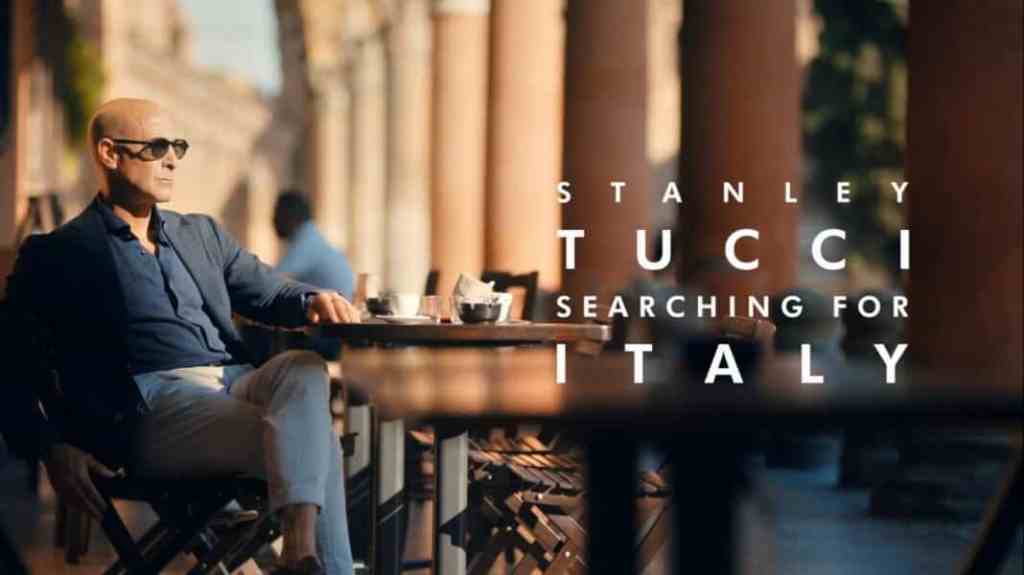
Many fascinating and relatively unknown Italian destinations began to get the attention they deserve, since CNN aired the famous tv series Stanley Tucci: Searching for Italy.
Well, I couldn’t have been more happy to know about Tucci visiting Turin (Torino in Italian) and putting this fabulous city under the spotlights.

Torino. The former Italian capital and gem of Northern Italy
In the second episode of the series, dedicated on the first capital of Italy and the Piedmont region, Stanley was enthusiastic and happily surprised to discover many historical-cultural, architectural and – last but not the least – gastronomic pearls shining set among dream scenarios.
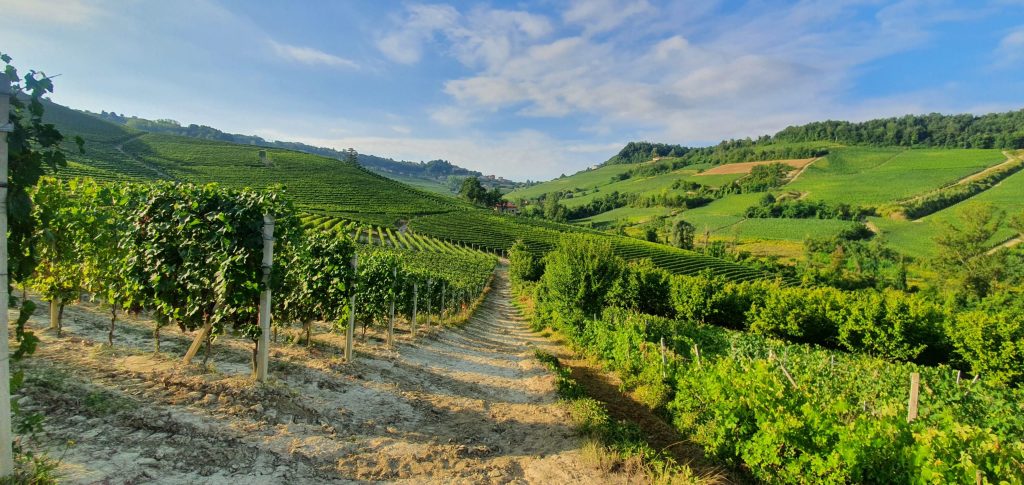
Langhe Region, Piedmont, Italy
I will focus on the vast and illustrious culinary panorama that belongs to Torino and, more generally, to the Piedmontese territory, in this blog post. As a matter of fact, this wonderful region of northern Italy is the gastronomic Valhalla coveted by experts, enthusiasts and overall by travellers and globetrotters with a curious palate. Given this premise: how could Tucci not be intrigued by the charm of Turin and Piedmont?
WELCOME TO TURIN, STANLEY!
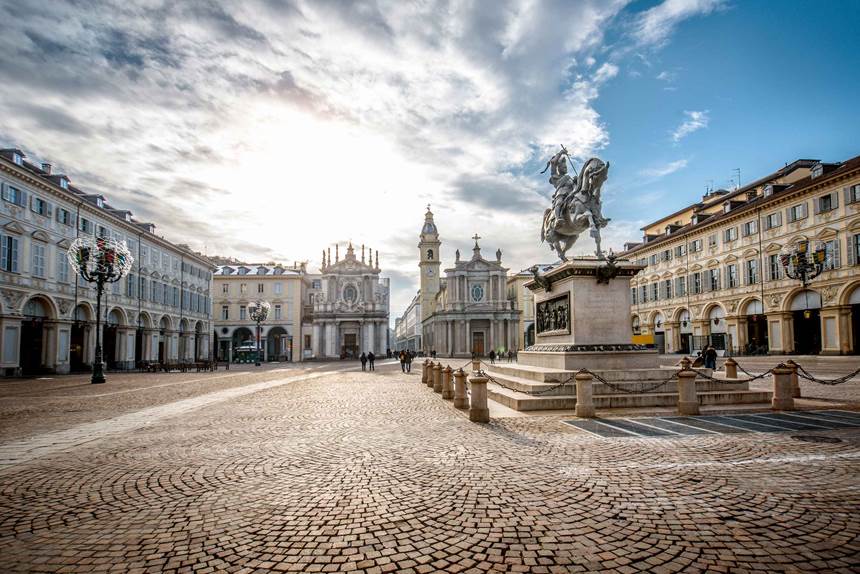
Stanley Tucci’s immersion in Turin’s culinary multiverse begins with the Bicerin di Torino. The most sweet and delightful of welcomes.
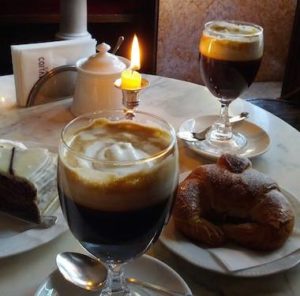
According to an ancient ease that I strongly suggest you to follow, it is not possible to visit Torino and not taste the legendary signature drink of the city made of espresso, chocolate and foamed milk, or cream – strictly served in a round glass (called bicerin, according to the Piedmontese dialect). A drink that Hemingway said should be included among the 100 things in the world to save. How to blame him, after all…
Well, Tucci goes to the historic place where about two hundred years ago this delight served in three layers of lush gluttony was invented; he visits the oldest café and chocolate shop in the city, which is also one of the historic places recognized as among the oldest in Italy.
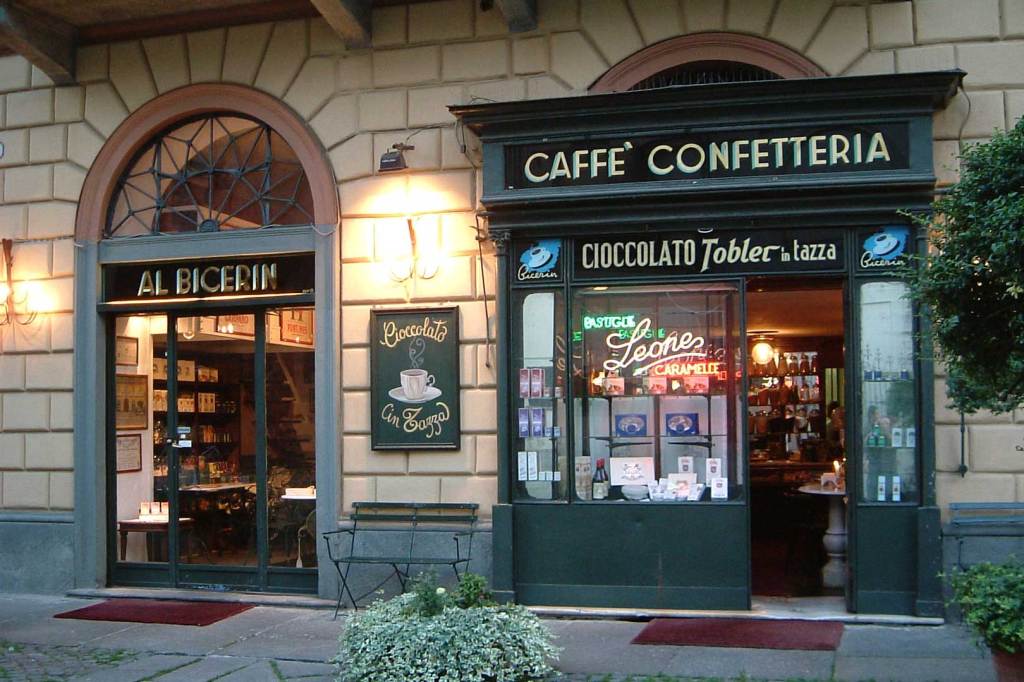
I’m talking about the little masterpiece of great beauty that responds to the name of Caffè Al Bicerin (1761), since 1856 always managed only by women, guardians of the secret recipe responsible for the sort of Nirvana that you will reach already after the first sip. Promise. If you don’t believe it, please, ask Tucci 🙂
FROM ICON, TO ICON…
If the eighteenth-century Caffè Al Bicerin and its timeless creation both are an expression of Turin, identity traits that we, as locals, have always used to introduce Torino to visitors, here is another place, also eighteenth-century and divine, which has became a significant symbol not only of Turin but also and above all of the Unification of Italy.
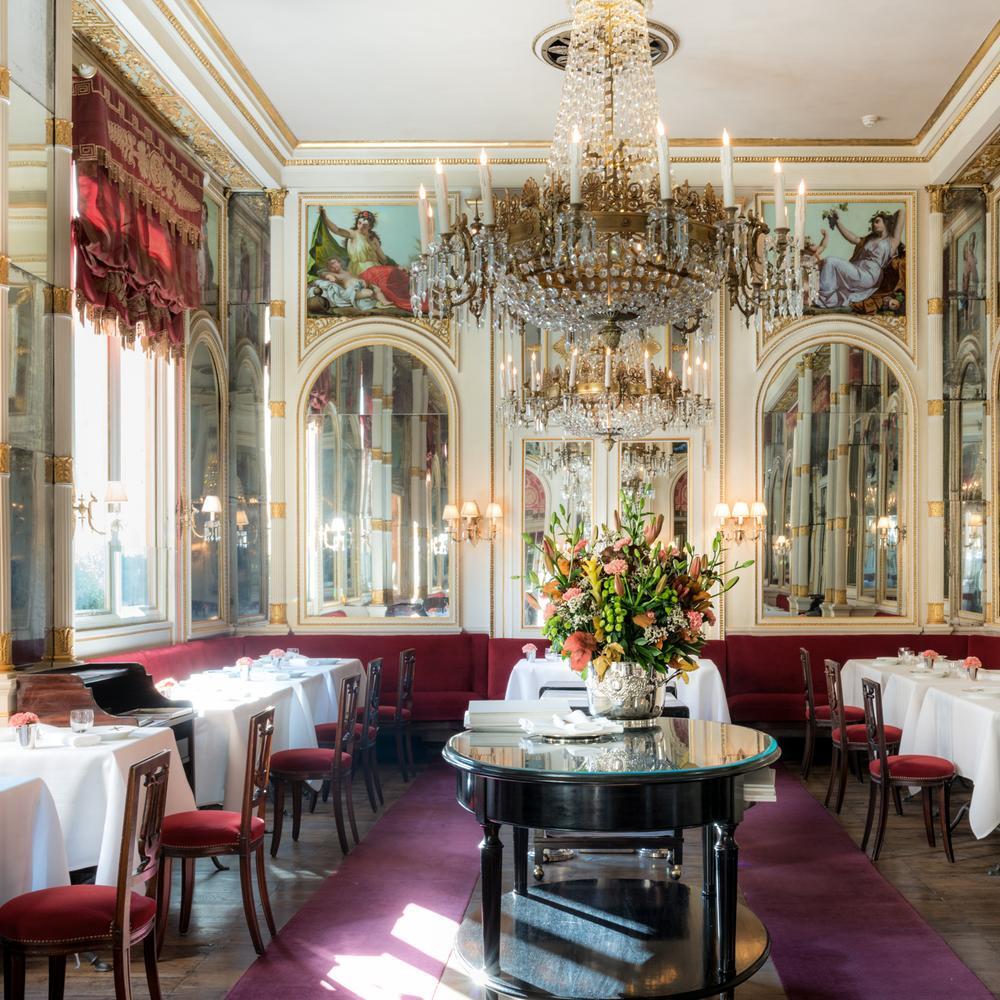
I’m talking about the Ristorante Del Cambio 1757, which enriches with magnificence one of the most fascinating squares of the city: Piazza Carignano, a truly fascinating square right in the heart of Torino.
Stanley Tucci thus goes from the iconic Café, a place from which artists of the caliber of Dumas, Eco and Hemingway are enchanted, to the legendary Restaurant where some of the most illustrious personalities who have written the history of our country have alternated, or were affectionated regulars. First of all, the bonvivant statesman and Minister of Finance Camillo Benso Conte di Cavour, to whom Del Cambio has dedicated a table of honour.
But that’s not finished yet. From Puccini to Maria Callas, from D’Annunzio to Audrey Hepburn, not to mention the whole lineage of the Agnelli family, so many important characters have created history and memory sitting among that mantle of irrepressible beauty that is Del Cambio.
Tucci could never have remained indifferent to this rich chapter of Italian history, also declined in a gastro-glamorous way.
But let’s now talk of the dish signature of the Piedmontese tradition’s, which is also a signature dish for Matteo Baronetto, chef patron of the 1 Michelin star restaurant.
La Finanziera (frock coats, litterally), which was the favourite dish of bankers and finance directors in the 1800s.
Probably this name has to be attributed for the long coat – finanziera – worn by businessmen who gravitated in the center of Turin and often chose Del Cambio restaurant for their business lunches. Or at least, this is one of the accredited hypotheses about the origin of the name.
The dish seems to date back to 1450 and seems to be an invention of a Lombard cook, Maestro Martino, who lived in the Monferrato area.
The Middle Ages are rich in recipes based on offal, so-called less noble parts of the animal (such as rooster crests, marrow, brain, testicles…) and from north to south Italy there are many dishes based on entrails that have gone down in history.
Those were times when it was necessary to make a virtue of necessity, therefore the poor cuisine, the cuisine of the peasants, became rich in creativity and starting from very often waste ingredients have imposed recipes that have become legendary and timeless.
Like La Finanziera, as a matter of fact.
And what was that exactly?
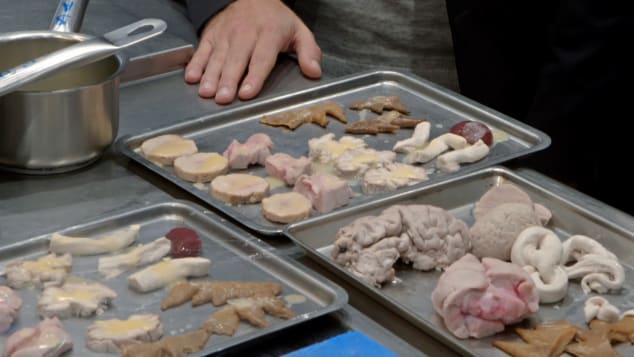
These above are still the main ingredients necessary to make this dish from Piedmont:
-Veal sweetbreads;
-cockerel crests;
-chicken livers;
-various other waste from the slaughter of cattle are all protagonists of what has been the favourite dish of politician, stateman and last but not least gourmandise Cavour.
Although the listed ingredients may not appear that palatable to many of us, the fearless Stanley Tucci did not hold back and showed all his virtuosity by tasting – not without a bit of reticence – even the testicles. Which, apparently, got a delicate taste.
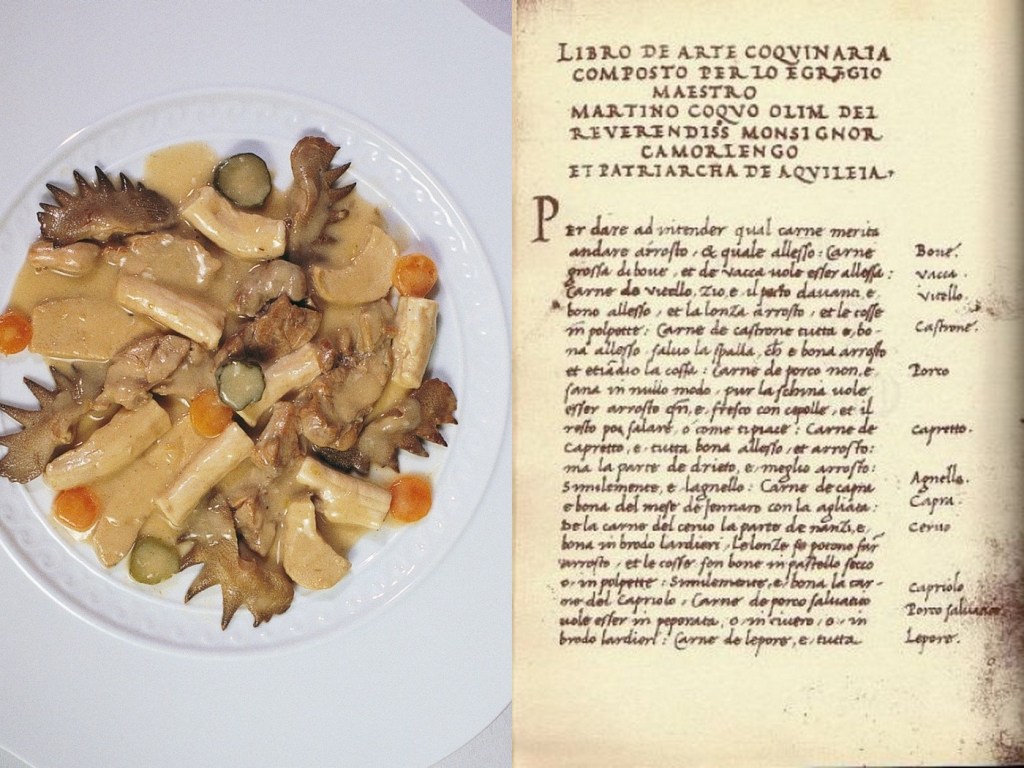
Finanziera’s Ancient recipe by cook Maestro Martino
Okay, I’ll take your word for it, my dear Tucci. Not gonna give it a try, though. Forgive the lack of… courage, you all!
Before concluding the chapter Del Cambio and Finanziera, please allow me to share with you two of my favorite photos of chef Abram – co founder at I EAT. Food Tours and Events, as well as my partner in life – dating back to when he was the former head chef and food consultant at one of the most significant places of Torino, and somewhat Italy overall. If you will join our gastronomic experiences in Torino, he’ll be happy to tell you lots of tasty and intriguing anecdotes about Del Cambio!

Chef Abram. Former head chef and food consultant at Farmacia Del Cambio, Torino

Chef at work. Abram at Farmacia del Cambio
THE DIAMONT OF PIEDMONT: AKA THE WHITE TRUFFLE FROM ALBA
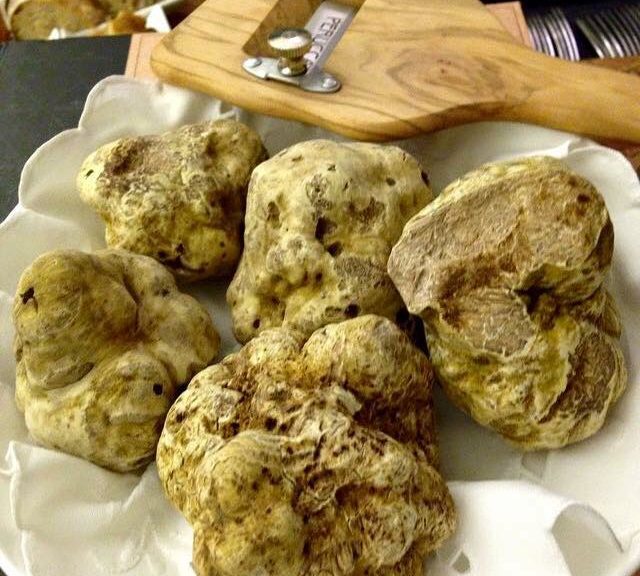
I now take you on a great trip from Torino to the kingdom of what is officially recognized as the most prized, precious and exquisite truffle in the world: il bianco d’Alba/the white of Alba.
Tucci had the pleasure to meet up with a man who is the perfect prototype of the man of the woods, living in harmony with nature, trees, soil and the subsoil, where the Piedmontese diamonds dwell hidden. Have a look at the photo below, I am quite sure you’ll agree with me 🙂
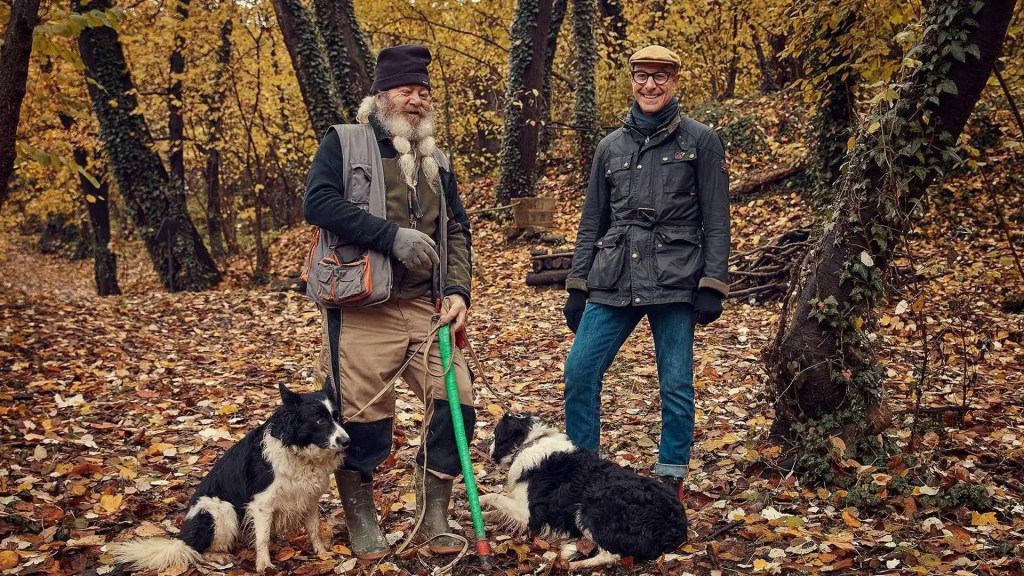
Stanley Tucci, Searching for Italy. Piedmont Episode
The woodsman Igor Bianchi, with his inseparable and efficient truffle dogs, is the King of Truffles and has revealed to the neophyte Tucci some tricks from navigated trifolao (trifolao is a Piedmontese dialect word fort truffle expert) on how to make less insidious the hunt for our precious mushrooms.
All this not without making him enjoy a quick yet incredibly delicious recipe: eggs with white truffle flakes. From chic breakfast proposals to kinda super starters, this dish certainly deserves to be tried. But I don’t think you need to be convinced, right?
CIN CIN AL BAROLO, THE KING OF PIEDMONTESE WINES

I end Tucci’s enogastronomic journey between Torino and Piedmont, with his visit to Serradeneari, located in a beautiful tiny village called La Morra, in the Langhe region.
Langhe is a region praised not only for its great wines and truffles, but also for a very important gastronomic scenery. It doesn’t stop here, though. The spectacular Langhe region is a Unesco World Heritage Site, now officially recognised as one of the most enchanting destinations if you are looking for some of the greatest Italian foods. And for sure if you are looking for the best wines of Italy. Yes, the best ones! Although you will find your perfect oasis of relaxation, due to the unspoiled nature around you and a large selections of outdoor activities to join if you’d like to.
Well, in La Morra Tucci had his special encounter with the so called King of Piedmontese Wines: His Majesty The Barolo.
Composed of 100% pure Nebbiolo grapes, Barolo is a red wine with a controlled and guaranteed designation of origin, whose production is allowed only in 11 municipalities in the province of Cuneo, including Barolo, Serralunga d’Alba and part of the territories of the municipalities of La Morra.
La Morra is where Tucci raised a glass (or maybe more) of Barolo with Giulia Negri: heretic barologirl, who guides the family business the new way.
You may wondering what does heretical barologirl mean and what does it mean doing wine business the new way?
In short, Giulia is opposed to a dogmatic and perhaps somewhat old way of making wine, and she opens up to the heuristic charm, to a methodological approach based on discovery and therefore on the continuous search for new horizons, in which to navigate with a special compass that is that Socratic awareness of knowing not knowing as the highest form of thought. Starting point that does not necessarily turn towards a point of arrival. That’s not properly the goal, in fact the arrival is always temporary.
This is at least my interpretation of the essence of her thought, which I quote below:
“There are no dogmas. Only those who err, those who know how to travel through the depths of soils and roots, seasons, winds and climate will be able to find the bussol“.
Personally I find this kind of approach interesting for it is free from past conditionings and it is surely more open and in line with our time, where celebrating the glory of the past is as necessary as leaping into the unknown and therefore the future.
I appreciated Tucci’s choice to visit Giulia Negri wineries as much as he appreciated their Barolo!
THANK YOU, TUCCI!
Stanley Tucci is an internationally renowned actor and director from the U.S. whose tv series Searching For Italy has definitely sent the American public into raptures. A huge audience follows him with enthusiasm and often chooses future destinations to explore accordingly to the ones shown in the show, those who have Tucci’s blessing, so to speak.
Well, Turin and Piedmont, although they have all the potential to be at the top of the can’t miss Italian destinations, still both represent a sort of dark side of Italy. Dark in the sense of still sort of unknown overseas.
These days celebrities represent one of the most powerful medium to transmit information and convey messages and content.
In the specific case of Tucci, thanks to the episode on Torino and Piedmont, a very large audience was able to virtually explore lands that they most likely ignored, deciding to add them to the list of places to visit soon.
As for the audience of guests who choose to participate to our culinary experiences, it consists of 80% US/Californian customers of which 100% have followed the Tucci series!
A simple episode of a successful and popular TV series can change the destiny of a city, with significant repercussions on the orbit of tourist activities and services -and not only- that gravitate around it.
Now, I am not here to say that this is what’s gonna happen to Turin shortly. I do not have enough data to be able to say that. However, I trust our city will soon stop acting like the shy and introvert little girl of Italy, showing up to the world her real essence of a mature woman, aware of her immense value and proud of it! Always maintaining that touch of Savoy secrecy that will always make her special among many, though.
WHAT ABOUT YOU? ARE READY FOR VISITING TORINO & PIEDMONT?
But now let me ask you: have you watched Tucci’s series?
How many of you had already heard of Torino, before watching Searching for Italy? I’d really like to hear from you!
Well, if Tucci’s journey got you thinking and your tastebuds are curious to dive deep into the foods & wines of Torino and the Piedmont region, we invite you to join our crazy delicious, fun, educational and thoughtful designed food tours!
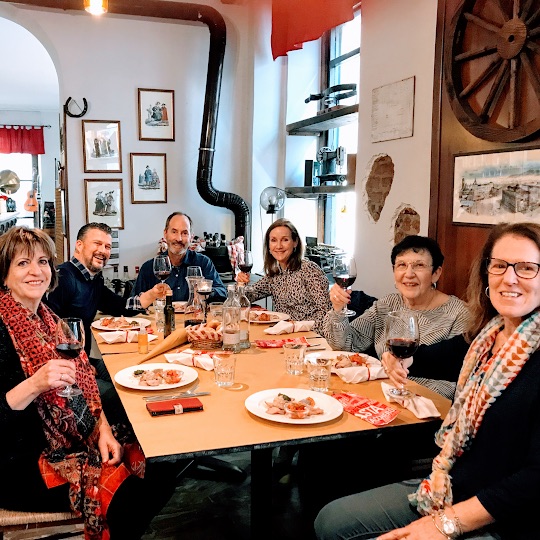
Food Tours in Turin with I EAT. Food Tours & Events
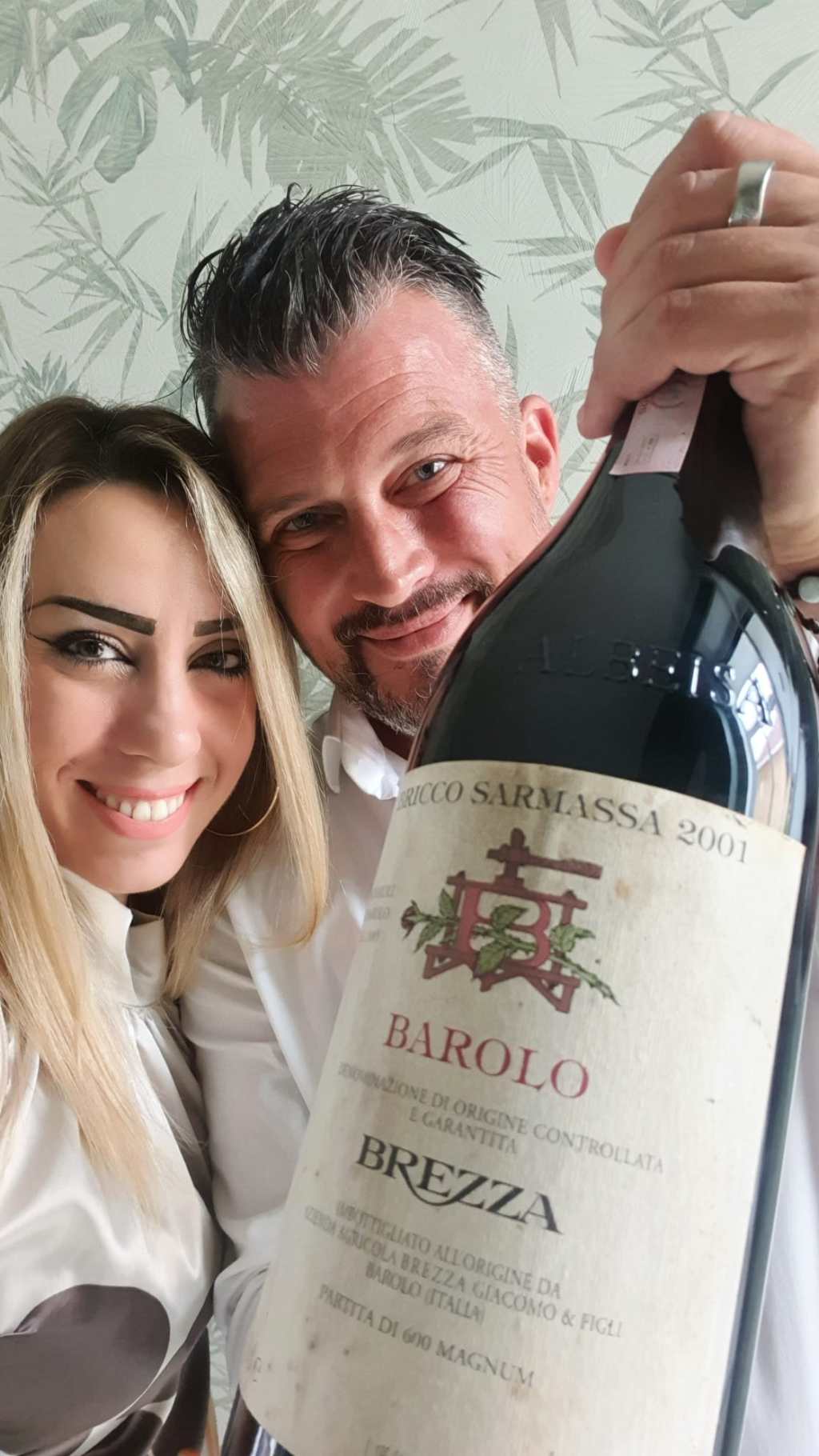
Barolo Magnum. Special Edition 2001. Bespoke food and wines itineraries with chef Abram.
If you looking for a fully custom food adventure in Piedmont or you need some help designing your coming gourmet vacation, please, drop me a message: I’ll be happy to introduce you to my personal travel planning service and create something unique, just for you.
The finest local cheeses carefully selected from small local producers, pair wonderfully with the most special wines.
Meantime, thanks for reading! Hope to see you soon in Torino 🙂
Cecilia
About the author
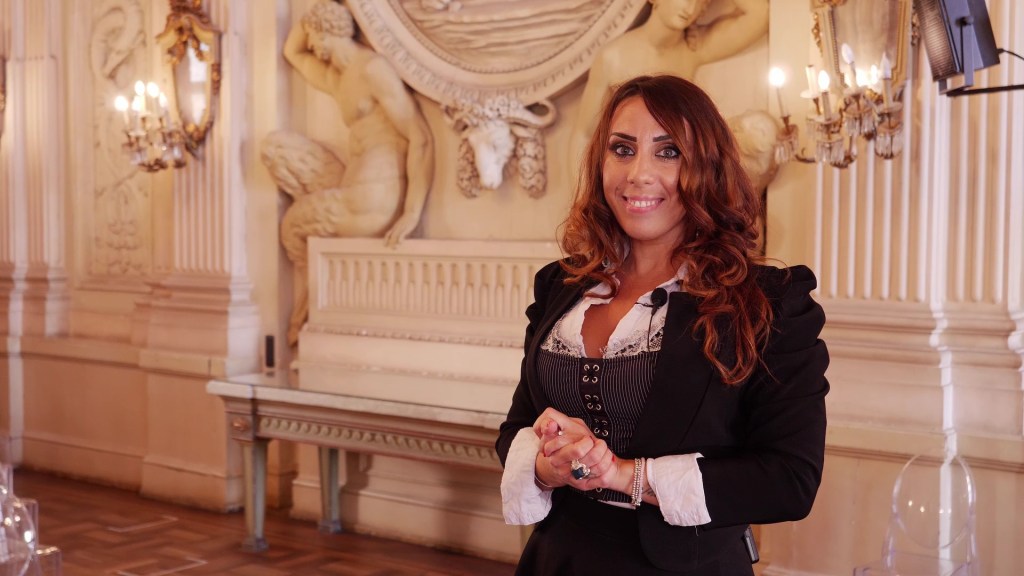
Discovering Torino and Piedmont with Cecilia. Your personal travel planner
Cecilia Puca is a sociologist by profession, a researcher for passion and a storyteller by vocation. She has specialised herself in Anthroposociology of Gastronomy and culture of food and devoted the last 10 years in studying the way people eat, cook, live and travel.
In 2018 she founded her own business in Torino: ‘I EAT. Food Tours and Events’, creating immersive gourmet itineraries, events and culinary vacations for curious palates and conscious travellers, using a multidisciplinary and creative approach.
